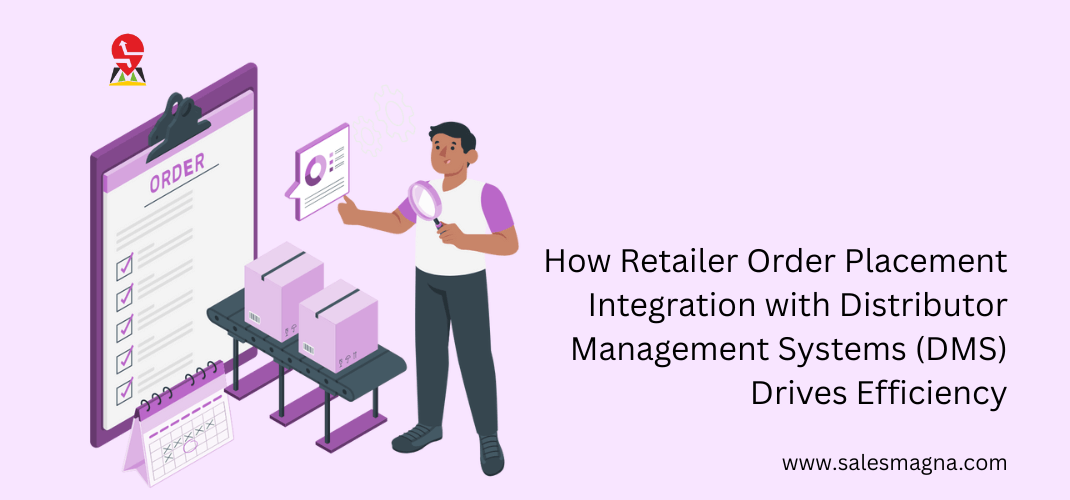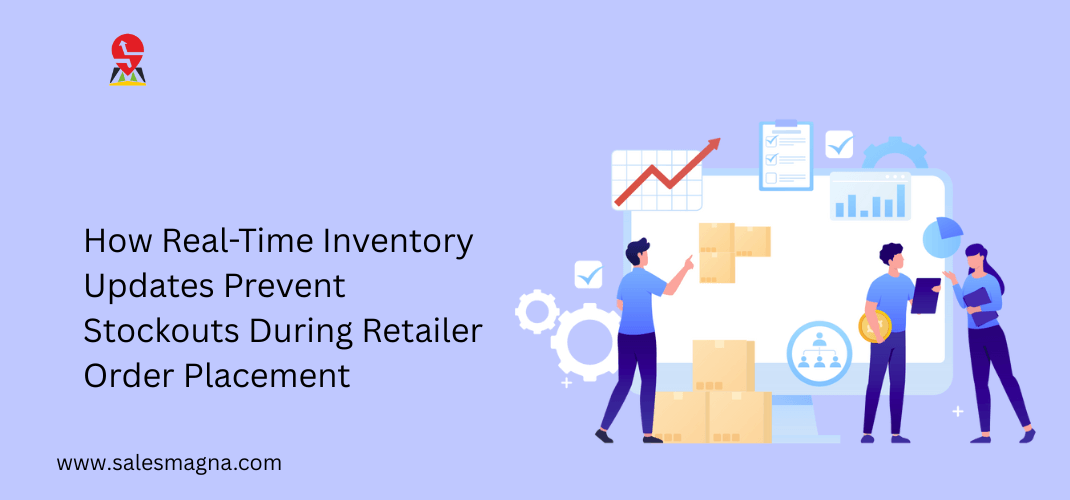When a retailer places an order, how long does it take to reflect in your distributor’s system? If it’s not immediate, there’s a significant gap in your supply chain that could be costing you both time and sales. In today’s fast-moving FMCG environment, every second counts – especially at the last-mile level where decisions are made quickly, often on the shop floor.
Manual communication methods like phone calls, messaging apps, or paperwork no longer fit into the modern retail rhythm. Retailers expect convenience, clarity, and speed. That’s where seamless integration between retailer order placement systems and Distributor Management Systems (DMS) becomes critical.
Let’s explore how this digital handshake between retailers and distributors ensures smooth operations, reduces inefficiencies, and supports stronger business growth.
What is Retailer Order Placement Integration?
Retailer order placement integration is the automated syncing of retailer orders, usually placed via a web portal or mobile app—with the backend distributor system, known as DMS. This setup eliminates the need for manual data entry, third-party communication, and delays caused by unstructured ordering methods.
For instance, when a retailer logs into a self-service platform and places an order, that order instantly reaches the distributor’s system without needing human intervention. It’s not just a tech feature, it’s a strategic shift toward building a connected and more responsive supply chain.
Challenges with Traditional Retailer Order Processes
Before diving into the benefits of integration, it’s important to understand the pain points that many FMCG companies and their distributor networks still face:
- Manual Data Entry: Sales reps or back-office teams must manually enter retailer orders into the distributor’s system, which increases the risk of errors and miscommunication.
- Order Processing Delays: If orders are collected via calls, messages, or notebooks, they may sit idle before reaching the distributor, leading to stockouts or late deliveries.
- Lack of Visibility: Retailers cannot track the order status, and distributors cannot plan dispatch or inventory allocation proactively.
- Inconsistent Pricing & Offers: When not system-driven, applying the right rate or promotional scheme can vary from retailer to retailer.
All these issues create friction, damage brand credibility, and reduce trust in the process.
How Integration Solves These Problems
Retailer-DMS integration doesn’t just digitize the order, it transforms the entire journey of that order from placement to fulfillment. Here’s how:
1. Real-Time Order Syncing
Once a retailer places an order through the platform, it instantly appears in the distributor’s dashboard. There’s no need to wait for a sales rep to forward the order, no duplication of effort, and no delay. This real-time visibility empowers both retailers and distributors to act faster.
2. Automated Inventory Validation
As soon as an order lands in the DMS, the system can check the availability of each item. If any product is out of stock, the distributor can immediately communicate alternatives, reducing the chances of partial or delayed deliveries.
3. Better Forecasting with Data Insights
Integrated systems collect order data over time. This means companies can:
- Predict ordering trends based on geography or retailer type.
- Adjust production schedules and dispatch plans.
- Prepare for seasonal demand or promotional spikes more accurately.
Predictive ordering and smarter stocking become easier when the order flow is data-driven.
Key Benefits of Retailer-DMS Integration
Let’s explore the value this brings to everyone involved in the supply chain:
For Retailers:
- 24/7 Self-Service Access: Retailers can place orders at their convenience, even after business hours.
- Order History: Easily track past purchases, identify fast-moving SKUs, and reorder them quickly.
- Transparency: Retailers receive updates on order status, delivery timelines, and any scheme eligibility.
For Distributors:
- Streamlined Workflows: Orders no longer need to be interpreted from handwritten notes or calls.
- Faster Turnaround Time: Immediate access to orders means quicker dispatch planning.
- Reduced Error Rates: Data accuracy improves when orders come directly from a retailer’s input.
For FMCG Companies:
- Stronger Retailer Relationships: Offering a digital platform for easy ordering positions your brand as more accessible and modern.
- Higher Order Frequency: Easy ordering encourages retailers to restock more often, leading to better sales velocity.
- Actionable Analytics: Access to granular sales data at the retailer level enables smarter decisions at the brand level.
Why It Matters in Rural and Semi-Urban Markets
Retailers in Tier 2 and Tier 3 cities are increasingly becoming tech-savvy. With growing smartphone penetration and digital adoption, even local Kirana stores are moving toward mobile and web platforms for business activities.
A self-service order placement system that integrates directly into the DMS allows brands to:
- Reach a wider retail base without increasing sales team size.
- Maintain consistent order processing even in regions where rep visits are infrequent.
- Improve service levels and build brand loyalty among rural retailers.
Real-World Scenario
Let’s say a retailer in a semi-urban market logs into a mobile app to place a repeat order for their top five selling SKUs. The order immediately reaches the distributor’s DMS. The system checks for stock, confirms availability, and assigns a delivery schedule. The retailer is notified via app alert or SMS. Meanwhile, the distributor begins processing the invoice and planning the delivery.
All of this happens within minutes, without any human follow-up, manual typing, or uncertainty.
Integration with SalesMagna DMS
SalesMagna’s Distributor Management System supports direct order capture from both web and mobile platforms used by retailers. Once an order is placed, it flows directly into the distributor’s system, eliminating delays and ensuring end-to-end visibility.
With intuitive design and real-time syncing, SalesMagna helps FMCG companies manage:
- Retailer order dashboards
- Stock visibility
- Route-wise order analysis
- Auto-generated invoices and dispatch plans
This seamless process not only drives speed and accuracy but also supports better decision-making through real-time data collection.
The Bigger Picture: Digital Retail Transformation
Retailer-DMS integration is a cornerstone of modern retail tech infrastructure. As businesses move toward more agile, transparent, and scalable sales models, this level of automation is no longer optional – it’s essential.
By digitizing and integrating the retailer’s order placement journey, FMCG brands can:
- Eliminate bottlenecks in supply chain operations.
- Build stronger, data-rich retailer relationships.
- Future-proof their distribution strategy in an increasingly competitive market.
Final Thoughts
If you’re still depending on manual or semi-digital ordering processes, now is the time to rethink. Integrating retailer orders with a smart DMS system sets the stage for operational excellence, real-time sales visibility, and stronger retail partnerships.
It’s not just about faster order processing, it’s about creating a connected retail network that can scale efficiently, respond quickly to market shifts, and deliver consistent value at every touchpoint.
Want to see how this works in practice? Explore how SalesMagna DMS is helping brands bridge the gap between their field operations and retail network with fully integrated, real-time solutions.

